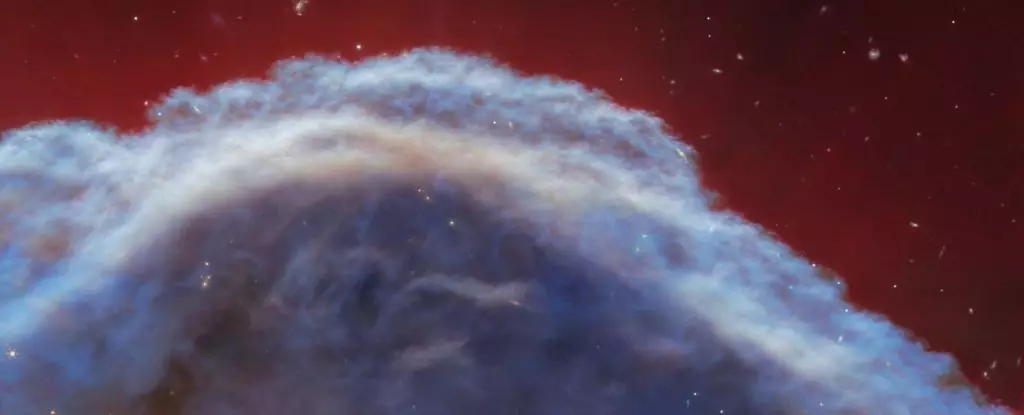The Horsehead Nebula, a well-known structure in Earth’s sky, has recently been examined in a new light thanks to mid- and near-infrared observations from the James Webb Space Telescope. This groundbreaking research has unveiled never-before-seen features within the nebula, providing astronomers with a more detailed understanding of this fascinating region in the universe.
Located approximately 1,300 light-years away, the Horsehead Nebula is part of the Orion molecular cloud complex. Its thick composition of dust and gas gives it a dark, shadowy appearance in optical light. However, when observed in wavelengths beyond the visible spectrum, the nebula transforms into a luminous, billowing cloud, showcasing its beauty and complexity.
The Horsehead Nebula serves as an excellent laboratory for studying stellar nurseries. Within its dense clump of material, small stars are in the process of formation, shielded from view by the surrounding dust. Nearby, the intense radiation from the Sigma Orionis complex – a system of young, hot stars – plays a crucial role in shaping the nebula and its surroundings.
Using a combination of 23 filters, astronomers have achieved unprecedented resolution in their observations of the Horsehead Nebula. This high level of detail has allowed them to track the emission from tiny particles, such as interstellar polycyclic aromatic hydrocarbons, and study the effects of ionized hydrogen and scattered light within the cloud.
The powerful radiation from the stars surrounding the Horsehead Nebula has significant consequences on its environment. Photodissociation, a process in which molecules break apart under ultraviolet light, creates a field of neutral interstellar medium around the nebula. This photodissociation region (PDR) is a key area of study for researchers using JWST images.
Moving forward, scientists plan to conduct an in-depth analysis of the light emitted by the Horsehead Nebula. This analysis will provide insights into the chemical composition of the dust and gas within the nebula, as well as the size and flow of dust grains based on light scattering. By developing a detailed model of the PDR’s evolution, researchers hope to better understand how these clouds evolve and eventually give rise to new stars.
The recent observations of the Horsehead Nebula by the James Webb Space Telescope have opened up exciting possibilities for further exploration and discovery. By delving into the mysteries of this iconic cosmic structure, astronomers are gaining valuable insights into the processes that shape our universe and give rise to new stars.



Leave a Reply